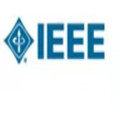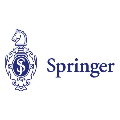We explore the cryptographic power of arbitrary shared physical resources. The most general such resource is access to a fresh entangled quantum state at the outset of each protocol execution. We call this the Common Reference Quantum State (CRQS) model, in analogy to the well-known Common Reference String (CRS). The CRQS model is a natural generalization of the CRS model but appears to be more powerful: in the two-party setting, a CRQS can sometimes exhibit properties associated with a Random Oracle queried once by measuring a maximally entangled state in one of many mutually unbiased bases. We formalize this notion as a Weak One-Time Random Oracle (WOTRO), where we only ask of the $m$--bit output to have some randomness when conditioned on the $n$--bit input. We show that when $n-m\in\omega(\lg n)$, any protocol for WOTRO in the CRQS model can be attacked by an (inefficient) adversary. Moreover, our adversary is efficiently simulatable, which rules out the possibility of proving the computational security of a scheme by a black-box reduction to a cryptographic game assumption. On the other hand, we introduce a non-game quantum assumption for hash functions that implies WOTRO in the CRQ\$ model (where the CRQS consists only of EPR pairs). We first build a statistically secure WOTRO protocol where $m=n$, then hash the output. The impossibility of WOTRO has the following consequences. First, we show the black-box impossibility of a quantum Fiat-Shamir transform, extending the impossibility result of Bitansky et al. (TCC '13) to the CRQS model. Second, we show a black-box impossibility result for a strenghtened version of quantum lightning (Zhandry, Eurocrypt '19) where quantum bolts have an additional parameter that cannot be changed without generating new bolts.
翻译:我们探索了任意共享物理资源的加密能力。最通用的这种资源是在每个协议执行开始时访问一个新鲜的纠缠量子态。我们称之为通用参考量子态 (CRQS) 模型,类比于众所周知的通用参考字符串 (CRS)。CRQS 模型是 CRS 模型的自然推广,但看起来更加强大:在两方设置中,CRQS 有时可以显示出与一个随机预言机有关的属性,只需将一个最大化纠缠态在许多互相无偏的基中测量一次即可。我们将这个概念形式化为弱一次随机预言机 (WOTRO),在其中,我们只要求 $m$ 位输出在给定 $n$ 位输入的情况下具有一些随机性。我们证明当 $n-m \in \omega(\lg n)$ 时,在 CRQS 模型中的 WOTRO 的任何协议都可以被攻击。此外,我们的攻击者是可有效模拟的,这排除了通过黑盒规约到加密游戏假设来证明方案的计算安全性的可能性。另一方面,我们引入了一个针对哈希函数的非游戏型量子假设,该假设暗示在 CRQS 模型 (其中 CRQS 仅包含 EPR 对) 中的 WOTRO。我们首先建立一个统计安全的 WOTRO 协议,其中 $m=n$,然后哈希输出。WOTRO 的不可能性具有以下后果。首先,我们展示了量子 Fiat-Shamir 变换的黑盒不可能性,将 Bitansky 等人 (TCC '13) 的不可能性结果扩展到 CRQS 模型。其次,我们展示了针对增强的量子闪电 (Zhandry,Eurocrypt '19) 的黑盒不可能性结果,其中量子闪电具有一个额外的参数,不能更改而不产生新的闪电。


